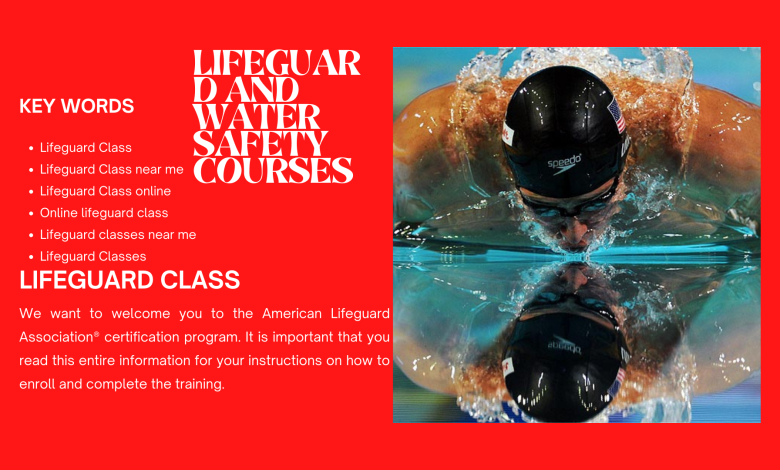Open water swimming: 7 tips for swimming with lifeguard clas in the sea

Swimming, the healthiest exercise
Free of impact, swimming is suitable for people of all ages. When swimming, the body gains strength, endurance, agility and elasticity. If it is also practiced in clean and natural waters, without chemical agents and in contact with the sun and fresh air, the benefits, both physical and mental, multiply.
1. Salt water VS fresh water
In addition to the benign health effects of seawater so often reported by thalassotherapy, saltwater, being denser than freshwater, gives us a higher buoyancy rate. Therefore, a priori, swimming with lifeguard class in the sea will be easier and we will move faster than in a lake or in the pool. The neoprene suit also helps, because in addition to isolating us from the cold, it will give us an extra degree of buoyancy.
2. The best time to swim
First thing in the morning is when the sea is usually flatter. On the other hand, as the day progresses, the wind tends to gain strength and the waves grow. With waves or currents, water swimming in open lifeguard class is notoriously difficult. A trick to avoid making the trip to the beach in vain is to consult the webcams that offer live images. Although surfers are looking for precisely the opposite – they need waves – the information on their web portals is really useful.
3. From the pool to the sea: six steps for an easier transition
- Before starting to swim in the sea, practice in the pool for several weeks. In the pool you will gain the technique, stamina and confidence necessary to tackle longer and longer open water journeys. If possible, choose a 50-meter (Olympic size) pool to train in.
- The crawl is the most appropriate style for open water, but try to alternate it with breaststroke and backstroke. If you do 100-meter sets, for example, include a 25-meter stretch of another style at the end of each set.
- Slightly lower the frequency of the stroke, lengthening it, taking the hands further, feeling that you flow. This will help you adapt your stroke to the sometimes-chaotic rhythm of the waves.
4. What to have for breakfast before the dip?
We have already addressed on other occasions the question of whether or not to exercise on an empty stomach. In general, if the pace is easy and does not last too long –less than an hour–, the energy we use in that session early in the day has been stored in the body the day before and it is not essential to have a full breakfast. However, each person is different and risking fainting due to hypoglycemia –lack of blood glucose– while in water should not be considered as a possibility.
5. Necessary equipment to swim in open water
- Swimming goggles: essential for swimming of lifeguard class without irritating the eyes and being able to see underwater. There are many types: rigid, soft, dark, light, mask, minimalist… To swim outdoors they must have protection against UVA rays. On very sunny days, those with a mirror lens are the most appropriate. In hours of low sun, polarized lenses neutralize glare.
- Cap: in addition to protecting us from the cold – the head is very sensitive to changes in temperature –, the swimming with lifeguard class cap preserves the hair from the effects of the sun, saltpeter, etc. For very cold waters, there are specific neoprene models.
6. How to swim in a straight line?
Every time you change class, take as reference a building, a mountain or a lighthouse that stands out on the horizon and is in the direction you want to go. Always swim in the direction of that point, making sure every 8 or 10 strokes that you do not stray. In salt water and with a wetsuit, if there are no big waves, with a little practice you can see far enough away just slightly raising your neck.
7. Don’t fight the waves, ride them!
On swell days, adapt the stroke rate to the current situation. Don’t fight the elements; try to join them. Stroke faster at a fixed cadence can be a waste of energy. The sea is much stronger than you, so you must take advantage of its fluctuations and push yourself when it benefits you the most.
8. Tips for pretest freediving
It is not necessary to hyperventilate or take a breath many times in a row before doing the apnea, this can fool the body with the feeling that it has a lot of oxygen and then play a trick on us, it is enough to take a couple of breaths and in a normal way before to dive
If you are going to barely passive with air in your lungs, you need to have a support to avoid surfacing due to the buoyancy effect. The easiest thing to do is to hold on to the pool stairs, although the curb or lane ropes can also be used.




